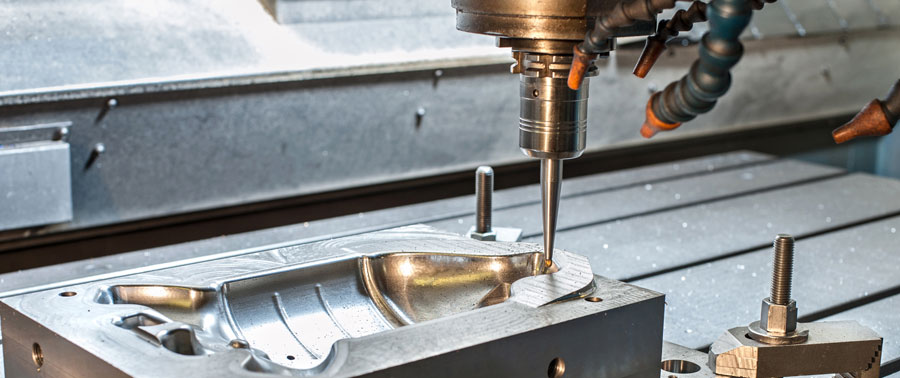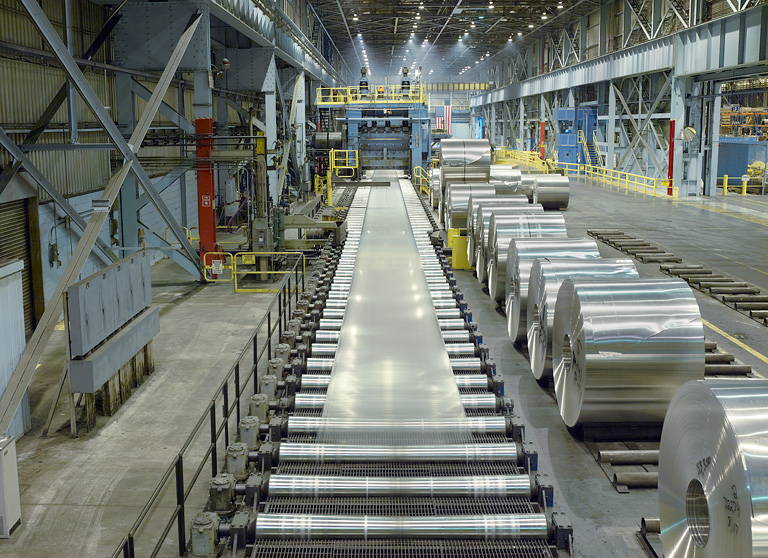Which Aluminum Fabrication Process is Best for Your Project?
What is Aluminum Fabrication?
An aluminum fabrication process is any method used to form aluminum into a specific shape. These techniques can involve a wide array of physical and chemical procedures that give aluminum varying physical properties.
-01(1).jpg) One aluminum extrusion line at KIMSEN
One aluminum extrusion line at KIMSEN
Aluminum fabrication techniques can be drastically different. Therefore, the physical properties of the resulting pieces vary significantly one process to the next. Consequently, it is crucial to understand the differences between these fabrication methods as some of their characteristics will be the primary driver in choosing the appropriate process. For example, some parts can only be made through a specific technique that provides the desired characteristics like strength or shape. Or maybe two processes can effectively create a part, but one creates a surface finish that is not ideal. The cost and rate of production can also be important factors when deciding on a specific process.
4 Aluminum Fabrication Processes You Should Know About
Four of the most common aluminum forming processes are extrusion, casting, rolling, and forging. Each of these employs a different technique and conveys unique properties to the aluminum. As a result, product designers can use them for different types of parts and applications.
1. Aluminum Extrusion
In this process, a powerful ram pushes a heated aluminum billet through a die that has the desired final cross-section form.
.jpg) KIMSEN's Extrusion Workshop
KIMSEN's Extrusion Workshop
The resulting aluminum extrusion will have the cross-section of the die, which can have a vast assortment of forms, including solid, hollow, and semi-hollow shapes. Furthermore, these profiles can be cut at any length, making extrusion the perfect method to create complex cross-sections at a relatively low production cost.
In addition, extrusions have a consistently smooth surface finish that is perfect for further processing to enhance their appearance and prevent corrosion.
.jpg) Solar components produced by KIMSEN
Solar components produced by KIMSEN
Some typical applications for aluminum extrusion:
• Architectural (Door & window frames, moldings, handrails, display systems)
• Electronics (Heatsinks, enclosures, LED lighting channels)
• Automotive (Roof rails, bumpers, electronics housings, roof racks)
• Aerospace (Wing structures, cabin interior)
• Solar Panels (Framing systems)
2. Aluminum Casting
Casting is a process that is great for forming aluminum into very complex shapes. The technique involves completely melting ingots of aluminum alloys and injecting the liquid metal into a mold.
 Image source: Internet
Image source: Internet
The poured metal fills the empty cavity completely and then solidifies to create a perfect aluminum duplicate of the mold’s internal shape. Casting can be done using several different mold types, including dies and permanent molds, clay molds, and sand molds. The parts produced using casting often require minimal additional machining. And if you use steel dies, you can repeat the process many times before replacing the die.
One of the main advantages of using die casting is the complexity of the parts it produces. This complexity is unparalleled by other aluminum forming processes, and it gives you options for different textures with almost no size limitations.
(1).jpg) Image source: Internet
Image source: Internet
Some typical applications for die cast aluminum:
• Automotive (Engine parts, electronic covers, brackets)
• Telecommunications (Networking and infrastructure equipment)
• Electronics (Enclosures, housings, and components)
3. Rolling Aluminum
The aluminum rolling process involves passing slabs or billets of aluminum alloys through different sets of rolls to reduce their thickness. This process repeats until the aluminum reaches its final form, resulting in a piece that will be considered a plate, sheet, or foil, depending on the thickness.
The aluminum plates, sheets, and foils produced by aluminum rolling have great versatility. Fabricators can further process them, performing operations such as bending, forming, or machining. For example, they can use rolled aluminum to produce beverage and food cans, aluminum roofing and gutters, and household aluminum foil.
 Image source: Internet
Image source: Internet
Some typical applications for rolled aluminum:
• Plate (Aircraft skins, spacecraft fuel tanks, storage tanks)
• Sheet (Anti-skid flooring, heat exchangers, corrugated roofing, composite panels)
• Foil (Semi-rigid food containers, household foil)
4. Forging Aluminum
Forging involves forming metal by pressing, pounding, or squeezing it to achieve the desired form. The producer heats a slab of aluminum and uses a press or hammer to change its shape.
Aluminum can be forged using an open or closed die. Closed dies include two halves that reflect the product’s final shape, similar to casting dies. Open dies do not constrain the aluminum slab, so as it is pressed or hammered in one direction, it can expand in the others. Manufacturers generally use open die forging for very large pieces.
.jpg) Image source: Internet
Image source: Internet
Parts produced by forging have great fatigue and impact resistance thanks to the strengthening imparted by the processing technique.
Some typical applications for forged aluminum:
• Automotive (Wheels, pistons)
• Tools (Hammers, pliers, wrenches)
• Aerospace (Gears, wheels)
Which Aluminum Fabrication Process Should You Choose?
The best forming process will be the one that offers the best characteristics according to your project.
- If you want fast production and a wide variety of design options with an excellent surface finish, you may wish to use aluminum extrusion.
- If you want a simple, inexpensive process to obtain complex shapes, aluminum die casting might be for you.
- If obtaining a sheet, plate, or foil of aluminum for further processing meets your needs, aluminum rolling might be the better forming option.
- If your product requires impact and fatigue resistance above else, forging could be appropriate.
Source: gabrian.com


 Chia sẻ:
Chia sẻ: